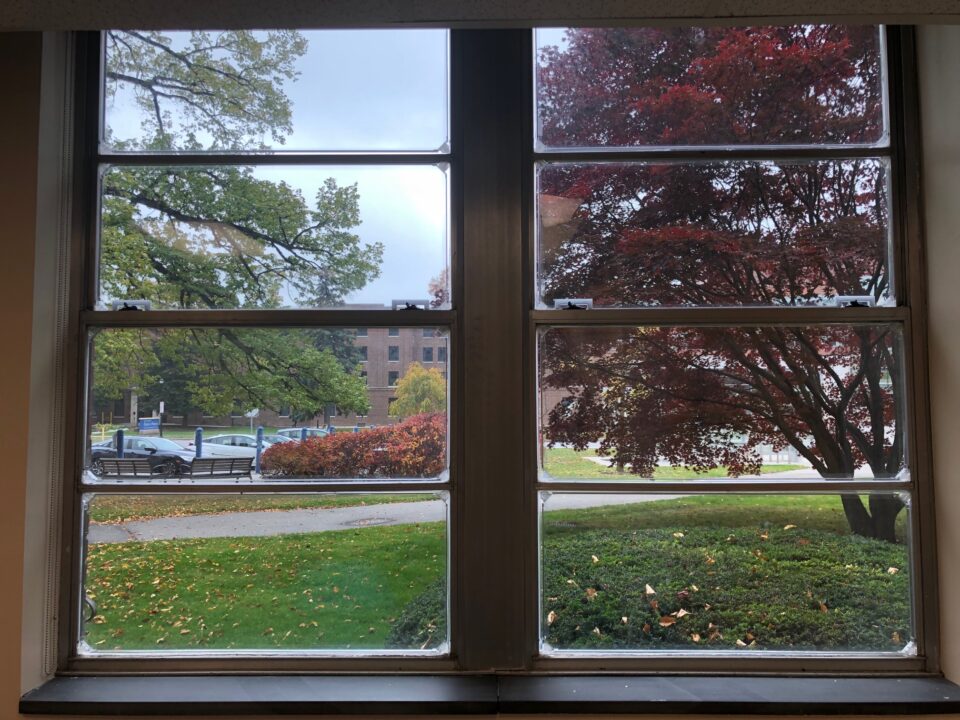How do you save energy without compromising comfort? Insulating windows is one solution. On November 1st 2022, Utilities and Energy Management treated six old single-pane windows in the UR Medical Center with WexEnergy WindowSkin, as a part of a pilot project to test and compare three different versions of the technology.
The WexEnergy Window Insulation Panel is a transparent, reusable window insulation system that is mounted onto existing windows. The panel promotes energy efficiency by trapping a volume of air between the window and the panel, making it function like a multiple-pane window. This enclosed air creates an insular barrier that prevents heat from escaping the room. By minimizing air leakage and heating requirements, thermal insulation reduces carbon emissions and energy loss, making it a cost-effective, efficient, and sustainable window upgrade. WexEnergy is a woman-owned business based in Rochester, and emphasizes closed loop sustainability by having a USA-based supply chain and upstate New York-based manufacturing process.
The retrofit pilot by University Utilities and Energy Management and Medical Center Facilities Operations, comprises three types of WindowSkins that will be compared side-by-side on identical windows. Although not discernable to the naked eye, what differentiates these WexEnergy window panels is the amount of light they each allow to pass through. This is known as Visible Light Transmission (VLT)—the lower the VLT, the less visible light is transmitted through the window.

The pilot project is being conducted on six windows in the Public Safety office of the School of Medicine and Dentistry. Each window has four panes, making a total of 24 panes. These windows were chosen based on cold complaints and the willingness of participants in the study. As temperatures in Rochester drop, temperatures in the building will be measured to test the effectiveness of the panels, and the process will be repeated in the summer during hot, sunny weather. The test will enable the University to validate the manufacturer’s claims as well as select the most feasible type of WindowSkin.
If successful, the pilot project might be a game-changer for building insulation on-campus. The initial installation, with a two-person team, took a total of two and a half hours, with one person spending 50 minutes on one window. However, with a larger team and windows cleaned in advance, the installation could be sped up significantly—up to 20 minutes per window for a 4-pane window. This would make technologies such as WindowSkin a compelling option for on-campus buildings seeking to improve their energy efficiency by reclaiming lost energy!
Written by Syeda Mahnoor Raza (‘24)
Photos courtesy of Timothy Vann
Top Photo: Treated and untreated windows, side-by-side, immediately after installation

